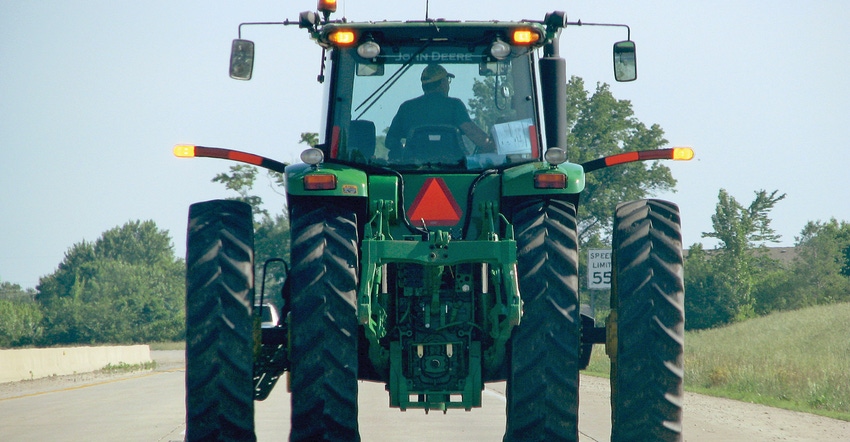April 20, 2017

By 8 a.m., the road in front of Denny Bell’s grain complex is bustling with traffic. Bell, Terre Haute, says it’s a main artery that carries people to and from work in town. It’s just one of the challenges he faces farming on the edge of a city, and moving farm equipment on hilly, narrow roads.
Understanding that town and city folk don’t think like farmers is important if your goal is being a good neighbor and minimizing conflict whenever possible. This year of all years would be a good time to make sure you’re following as many "neighbor-friendly" practices as possible. Publicity about new herbicide systems has many people concerned. The companies that make the products insist they’re safe and that drift or volatilization won’t be a problem if applicators follow directions. Hopefully, they’re right. Yet everyone will likely breathe easier with a successful spraying season under their belt.
Here are six tips Bell tries to follow when moving equipment and carrying out other farm tasks in congested areas. See how many might apply to you.
1. Pick the best possible day to apply products with an odor. Bell applies turkey litter in fields going to corn. There is some odor, and it typically lasts a couple of days, he notes. “We try to apply it before a rain so that it should interfere with as few family outings as possible,” Bell says. “We try to be as sensitive about when we apply as we can.”
2. When possible, let people pass when moving equipment. You can’t pull over just anywhere, but when possible, Bell and his employees pull to the side of the road to let cars pass. Even so, he’s been challenged by one irate motorist who refused to drive around the equipment because he would be partly on the shoulder. People not connected to agriculture just don’t understand what’s involved in a task like moving equipment, Bell says.
3. Stay calm to avoid confrontation. One motorist stopped his car, got out and challenged Bell to get out of the combine cab and fight! Obviously, he stayed in the combine cab, and the perturbed motorist finally went on his way.
4. Pick less-traveled times to move equipment. Planning moves in Bell's case involves more than just how to get each piece of equipment to the field. It also means timing things so he is on the road when car and truck traffic is as minimal as possible.
5. Use escort vehicles if the situation calls for it. Some areas where Bell moves equipment are hilly with drop-offs, and others involve S-curves. When possible, he has someone drive ahead of him so a driver coming up the hill or around the curve will have more warning.
6. Stay off main arteries when possible. Rather than travel on busy highways, you may need to opt for a route to the field that isn't the shortest, Bell says. He maps out a route that involves side roads when possible.
The bottom line boils down to "be careful out there" on the roads with farm equipment, and be respectful of neighbors and those who don’t understand farming. All accidents and incidents won’t be avoidable. Be as proactive as possible.
You May Also Like




